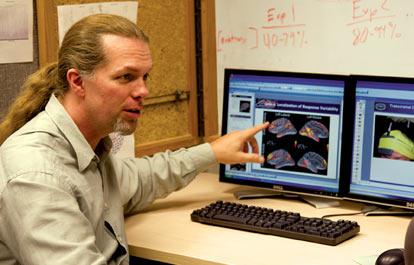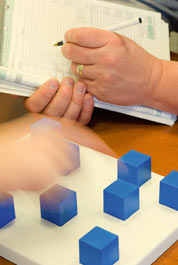

Scientific Lectures //
Title: Elucidating GABA Mechanisms in Working Memory Pathophysiology in Schizophrenia
Carlos R. Cortes M.D., Ph.D. - Faculty Research Associate, Maryland Psychiatric Research Center, Psychiatry Department, University of Maryland School of Medicine
Presented: June 11, 2013
ABSTRACT: Cognitive dysfunction in schizophrenia is the most frequent and most stable symptom/sign over time and the degree of this dysfunction is the best predictor of long-term functional outcome. Despite impairing socio-occupational aspects of the individual and generating a burden for family and society in general, there is no effective pharmacological treatment for this cognitive dysfunction.
Advances in the field of neuroimaging have increased our understanding about cognitive processes to the extent that functional magnetic resonance imaging (MRI) has been instrumental in identifying working memory as an important factor in the cognitive dysfunction in schizophrenia. Despite the improved understanding of brain mechanisms underlying aberrant cognitive processes in schizophrenia and the numerous neurochemicals involved in its pathophysiology, there is little information as to how to link the functional neuroimaging results of working memory (WM) impairment, and the known pathophysiology in schizophrenia. An important obstacle to understand this link is the different behaviors of the signal in the prefrontal cortex when comparing healthy and schizophrenia groups in neuroimaging studies of WM.
Can different prefrontal signal behaviors (hypofrontality, hyperfrontality, both, or none) be explained by the differential WM interference caused by the interaction of the different Gamma-Aminobutryic Acid (GABA) pathology with different inter-stimulus interval (ISI) timings? This work answered this research question by combining experimental functional MRI and theoretical computational approaches.
Comparing healthy and schizophrenia groups in a functional MRI study using a parametric manipulation of phonological and orthographic interference during a one-back task at two different ISI (1000 and 1600 milliseconds), I provided evidence that interaction of group x interference x ISI generates different prefrontal outcomes. Simulating parametric perturbations to different prefrontal GABA interneurons in a working memory model at different ISI, I generated different outcomes of the modeled neuroimaging signal in the prefrontal cortex model. By generating different prefrontal cortex activity outcomes when comparing healthy versus schizophrenia in both approaches (experimental and theoretical), I was able to suggest a link between functional neuroimaging results and underlying pathophysiology in schizophrenia.

